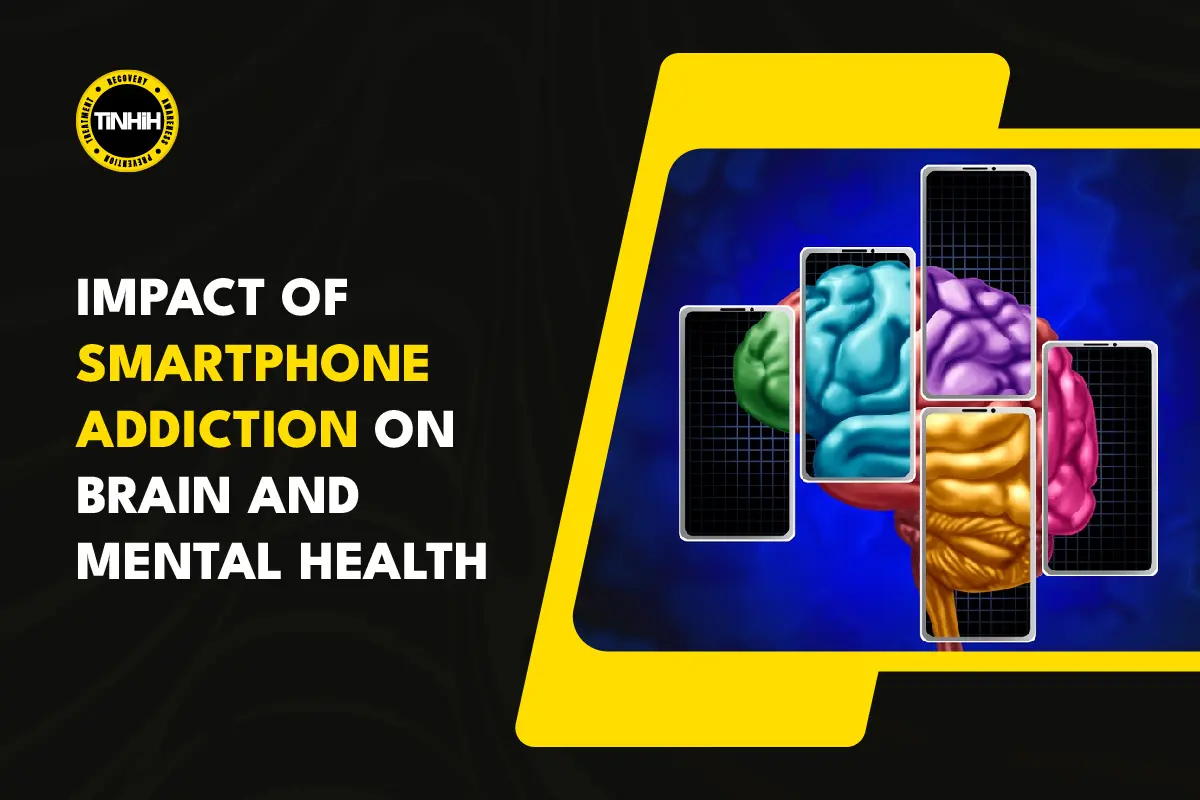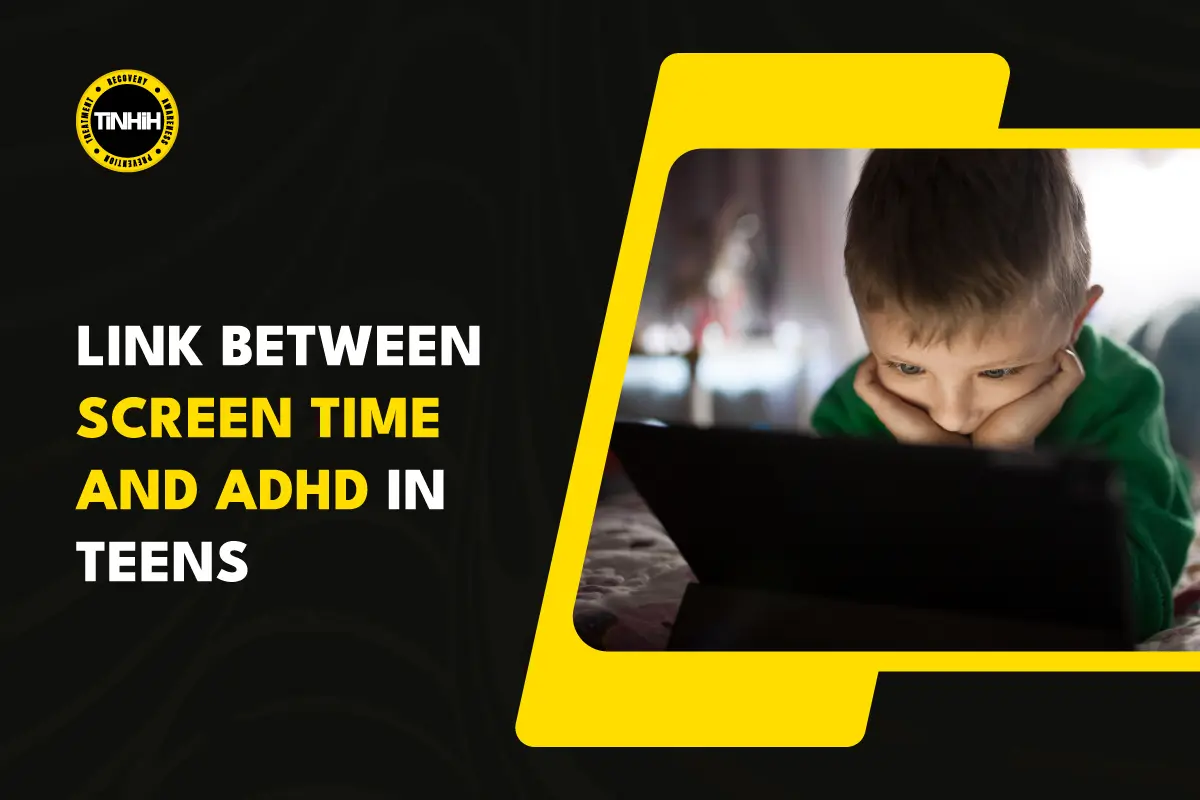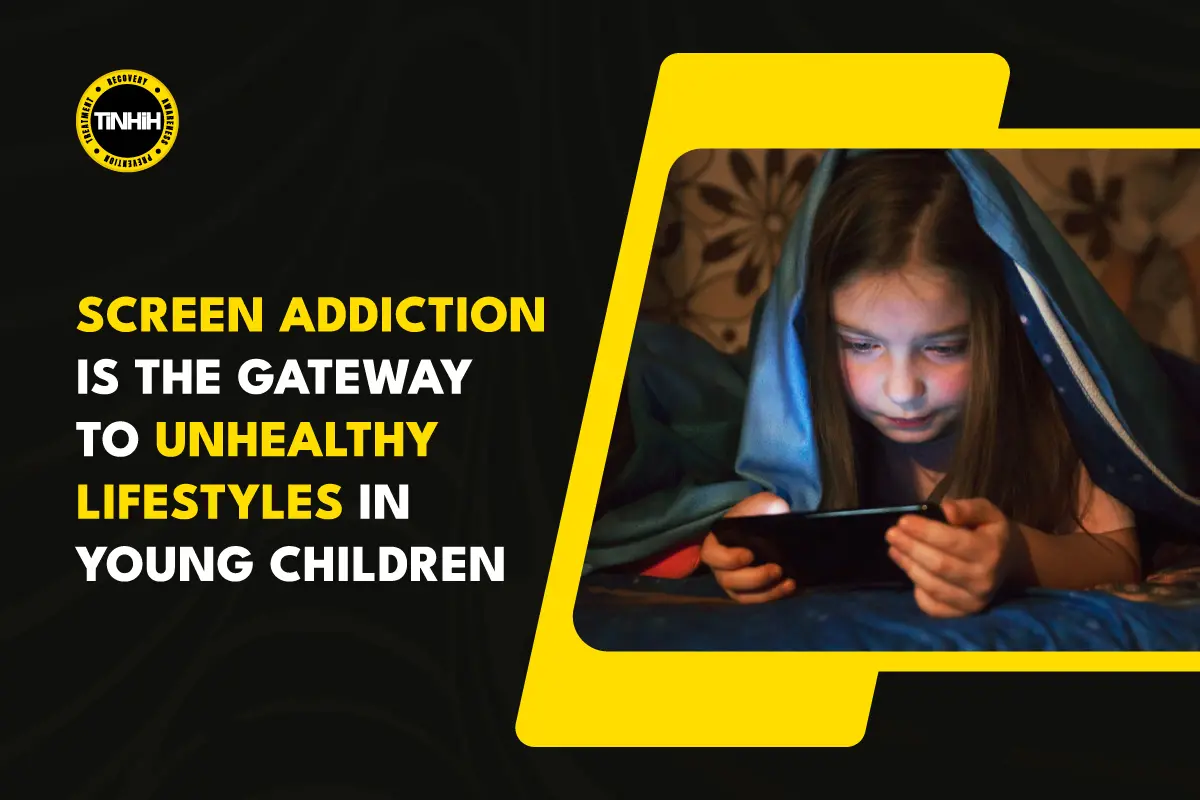
The Link Between Screen Time and ADHD in Teens

Attention Deficit Hyperactivity Disorder (ADHD) is a neurodevelopmental disorder characterized by symptoms such as inattention, hyperactivity, and impulsivity. Among adolescents, ADHD is a prevalent mental health condition, with estimates suggesting that around 9% of children and adolescents worldwide are affected by it.
As teens navigate the challenges of academic demands, social interactions, and increasing responsibilities, understanding the factors that contribute to ADHD becomes crucial for effective management and support.
In recent years, there has been a significant surge in the use of screens among adolescents. With the widespread availability of smartphones, tablets, computers, and other digital devices, teenagers are spending more time than ever engaging with screens.
From social media scrolling to gaming and online content consumption, screens have become an integral part of teenagers’ daily lives, shaping their behaviors, habits, and interactions with the world around them.
Table of Contents
Statement of Purpose: To Examine The Potential Correlation Between Screen Time and ADHD in Teens
This exploration aims to delve into the potential relationship between screen time and ADHD among teenagers. As screens increasingly permeate various aspects of adolescents’ lives, there is growing concern about the impact of excessive screen time on mental health, including its potential role in exacerbating ADHD symptoms.
By examining existing research and insights, we seek to shed light on this complex interplay between screen use and ADHD among teens, offering insights into potential implications and avenues for intervention and support.
Definition and Symptoms of ADHD
Attention Deficit Hyperactivity Disorder (ADHD) is a neurodevelopmental disorder characterized by persistent patterns of inattention, hyperactivity, and impulsivity that interfere with functioning or development.
Individuals with ADHD may struggle to sustain attention on tasks or activities, have difficulty organizing tasks and activities, and often act impulsively without considering consequences.
There are three subtypes of ADHD: predominantly inattentive presentation, predominantly hyperactive-impulsive presentation, and combined presentation, where both inattention and hyperactivity-impulsivity are present.
Statistics on ADHD Prevalence in Teenagers
The prevalence of ADHD among teenagers is significant, with studies indicating that approximately 9% of adolescents aged 13 to 18 years old are diagnosed with ADHD worldwide.
This prevalence rate underscores the widespread impact of the disorder on this age group, highlighting the need for effective identification, intervention, and support.
However, it’s essential to note that ADHD prevalence rates may vary across populations and may be influenced by factors such as gender, socioeconomic status, and cultural differences.
Impact of ADHD on Academic and Social Functioning
ADHD can have profound effects on various aspects of teenagers’ lives, including academic and social functioning. In academic settings, individuals with ADHD may struggle with tasks requiring sustained attention, organization, and time management.
Leading to difficulties in completing assignments, following instructions, and staying focused during lectures. Consequently, academic performance may suffer, potentially impacting future educational and career opportunities.
In social contexts, adolescents with ADHD may encounter challenges in forming and maintaining relationships due to impulsive behavior, difficulty regulating emotions, and social skills deficits. They may experience rejection or social isolation, leading to feelings of loneliness and low self-esteem.
Additionally, ADHD-related impulsivity and risk-taking behavior may contribute to conflicts with peers and authority figures, further exacerbating social difficulties.
Statistics on The Amount of Screen Time Teens Engage in Daily
Recent studies have highlighted the substantial increase in screen time among teenagers in recent years. On average, adolescents spend approximately 7 hours per day engaging with screens, including smartphones, tablets, computers, televisions, and other digital devices.
This significant portion of their daily routine underscores the pervasive nature of screen usage in teenagers’ lives and its impact on various aspects of their well-being.
Types of Screens Commonly Used by Teenagers (smartphones, tablets, computers, etc.)
Teenagers today have access to a wide range of digital devices, each offering different functionalities and forms of screen-based interaction.
Among the most commonly used devices are smartphones, which serve as versatile tools for communication, entertainment, and information access. Tablets, with their portability and touchscreen interfaces, are also popular among teens, and often used for gaming, social media, and multimedia consumption.
Computers, including desktops and laptops, are essential for academic tasks, gaming, creative pursuits, and internet browsing. Additionally, teenagers may also engage with screens through other devices such as gaming consoles, e-readers, and smartwatches, further diversifying their screen time activities.
Potential benefits and drawbacks of screen time for teens
Screen time can offer both benefits and drawbacks for teenagers, depending on how it is utilized and managed. On one hand, screens provide valuable opportunities for learning, communication, creativity, and entertainment. Educational apps, online resources, and digital tools can enhance academic skills and facilitate self-directed learning.
Social media platforms enable teenagers to connect with peers, express themselves, and explore diverse perspectives and interests. Screens also offer access to a wealth of entertainment content, including games, videos, music, and literature, which can provide relaxation and enjoyment.
However, excessive or inappropriate screen time can also pose risks to teenagers’ health and well-being. Prolonged screen use may lead to sedentary behaviors, physical health problems such as eye strain and musculoskeletal issues, and disrupted sleep patterns.
Excessive exposure to screen-based content, particularly on social media, may contribute to negative body image, cyberbullying, and psychological distress.
Moreover, excessive screen time has been associated with attention difficulties, impulsivity, and hyperactivity, raising concerns about its potential impact on mental health, including the exacerbation of ADHD symptoms.
The Link Between Screen Time and ADHD
These findings underscore the potential impact of screen time reduction interventions as part of comprehensive ADHD management strategies.
By promoting mindful and balanced screen use habits, clinicians, educators, and parents can help mitigate the adverse effects of excessive screen time on ADHD symptoms and support the well-being and functioning of teenagers with ADHD.
However, further research is needed to elucidate the underlying mechanisms and optimal approaches for incorporating screen time reduction into ADHD treatment plans.
Research Findings Suggesting a Correlation Between Excessive Screen Time and ADHD Symptoms
Several research studies have indicated a potential correlation between excessive screen time and ADHD symptoms among teenagers.
A longitudinal study published in the Journal of the American Medical Association (JAMA) found that higher levels of screen time during adolescence were associated with an increased likelihood of developing ADHD-related symptoms over time.
Similarly, a meta-analysis of multiple studies conducted by researchers at leading universities concluded that there is a significant association between screen time and ADHD symptoms, with prolonged screen exposure correlating with greater severity of ADHD symptoms in adolescents.
Mechanisms Through Which Screen Time Might Exacerbate ADHD Symptoms
Several mechanisms have been proposed to explain how excessive screen time might exacerbate ADHD symptoms among teenagers.
Firstly, the constant stimulation and rapid information processing required by screen-based activities can overwhelm the attentional capacities of individuals with ADHD, leading to difficulties in sustaining attention and regulating attentional focus.
Moreover, the interactive and immersive nature of screen activities, such as video games and social media, can trigger impulsive responses and reward-seeking behavior, further exacerbating impulsivity and hyperactivity in individuals with ADHD.
Additionally, the blue light emitted by screens has been shown to disrupt sleep patterns and circadian rhythms, which can contribute to inattention, fatigue, and irritability, all of which are common symptoms of ADHD.
Studies Exploring The Impact of Screen Time Reduction on ADHD Symptoms
While the relationship between screen time and ADHD symptoms is complex, emerging evidence suggests that reducing screen time may have beneficial effects on ADHD symptomatology among teenagers.
A randomized controlled trial conducted by researchers at a major medical center investigated the effects of a screen time reduction intervention on ADHD symptoms in adolescents diagnosed with ADHD.
The results indicated that participants who underwent the intervention showed significant improvements in attention, hyperactivity, and impulsivity compared to those in the control group.
Similarly, longitudinal studies tracking changes in screen time habits and ADHD symptoms over time have shown that reductions in screen time are associated with improvements in ADHD-related behaviors and cognitive functioning among adolescents.
3 Factors Influencing the Relationship
Duration and Frequency of Screen Time
The duration and frequency of screen time play a significant role in shaping the relationship between screen time and ADHD symptoms among teenagers. Research suggests that longer durations of screen exposure, particularly when coupled with frequent use throughout the day, may increase the risk of exacerbating ADHD symptoms.
Adolescents who spend excessive amounts of time engaged in screen-based activities, such as gaming, social media, or streaming content, may experience heightened levels of inattention, impulsivity, and hyperactivity.
Furthermore, irregular or unpredictable patterns of screen use, such as late-night browsing or binge-watching, can disrupt sleep patterns and exacerbate ADHD-related difficulties in regulating attention and behavior.
Content and Type of Screen Activities
The content and type of screen activities engaged in by teenagers can also influence the relationship between screen time and ADHD symptoms. Certain types of screen activities, such as fast-paced action video games or social media platforms with constant notifications and updates, may be more cognitively demanding and overstimulating, thereby increasing the likelihood of attentional difficulties and impulsivity in individuals with ADHD.
On the other hand, screen activities that involve passive consumption of content, such as watching television or scrolling through endless feeds, may contribute to attentional lapses and distractibility.
Additionally, the presence of interactive elements, rewards, and incentives within screen activities can heighten arousal levels and reinforce impulsive behaviors, further exacerbating ADHD symptoms.
Individual Susceptibility and Predisposition to ADHD
Individual differences in susceptibility and predisposition to ADHD play a crucial role in shaping how teenagers respond to screen time exposure. While excessive screen time may exacerbate ADHD symptoms in some adolescents, others may exhibit resilience or show minimal effects on their ADHD-related behaviors.
Factors such as genetic predisposition, neurobiological differences, and environmental influences can contribute to variations in how teenagers with ADHD respond to screen-based stimuli.
Additionally, co-occurring mental health conditions, such as anxiety or depression, may interact with ADHD symptoms and amplify the impact of screen time on adolescents’ cognitive and emotional functioning.
Understanding these individual differences is essential for tailoring interventions and support strategies that address the specific needs and challenges faced by teenagers with ADHD in navigating their screen time habits and promoting their overall well-being.
Strategies for Parents to Manage Their Teen’s Screen Time
- Establish clear screen time limits: Set reasonable boundaries for the amount of time your teenager spends on screens each day, considering factors such as age, developmental stage, and individual needs.
- Create screen-free zones and times: Designate specific areas in the home, such as bedrooms or dining areas, as screen-free zones to promote family interaction and relaxation. Additionally, establish designated times during the day when screens are not permitted, such as during meals or before bedtime.
- Lead by example: Model healthy screen use habits for your teenager by demonstrating moderation and mindfulness in your own screen time behaviors. Show interest in alternative activities such as reading, outdoor recreation, or creative pursuits that do not involve screens.
- Encourage balanced activities: Encourage your teenager to engage in a variety of activities beyond screens, such as sports, hobbies, volunteering, or spending time with friends and family. Help them explore interests and passions that promote personal growth and well-being.
- Foster open communication: Maintain open and non-judgmental communication with your teenager about their screen time habits, concerns, and challenges. Listen to their perspectives and collaborate on developing mutually agreed-upon screen time guidelines that respect their autonomy and preferences.
Encouraging Healthy Screen Habits Among Adolescents
- Educate about screen time guidelines: Provide adolescents with age-appropriate information about recommended screen time guidelines and the potential impact of excessive screen use on their physical and mental health. Empower them to make informed decisions about their screen time habits.
- Promote digital literacy skills: Teach teenagers critical thinking skills, media literacy, and online safety practices to navigate the digital landscape responsibly. Encourage them to question and evaluate the content they encounter online and to use digital technology as a tool for learning and self-expression.
- Foster balance and moderation: Encourage adolescents to cultivate a balanced approach to screen time by incorporating periods of rest, physical activity, and face-to-face social interaction into their daily routines. Emphasize the importance of self-regulation and self-awareness in managing screen time effectively.
- Support healthy sleep habits: Educate teenagers about the impact of screens on sleep quality and circadian rhythms, and encourage them to establish consistent bedtime routines that minimize screen exposure before bedtime. Provide guidance on creating a sleep-friendly environment free from electronic devices.
Collaborative Efforts Between Parents, Educators, and Healthcare Professionals
- Establish partnerships: Foster collaboration between parents, educators, healthcare professionals, and community stakeholders to address the complex interplay between screen time and adolescent health. Work together to develop comprehensive strategies and resources that promote healthy screen habits and support adolescents’ overall well-being.
- Provide education and training: Offer workshops, seminars, and training sessions for parents, educators, and healthcare professionals on the latest research findings, best practices, and evidence-based interventions related to screen time management and adolescent mental health.
- Integrate into school curricula: Integrate digital literacy education and wellness initiatives into school curricula to equip students with the skills and knowledge needed to navigate the digital world responsibly and maintain healthy screen habits. Collaborate with teachers, school counselors, and administrators to develop age-appropriate resources and curriculum materials.
- Offer support and resources: Provide access to support services, counseling, and resources for adolescents and families struggling with excessive screen time or related mental health issues. Foster a supportive and inclusive environment where individuals feel empowered to seek help and support when needed.
Conclusion
The relationship between screen time and ADHD among teenagers is complex and multifaceted. Research suggests a correlation between excessive screen time and ADHD symptoms, with prolonged exposure potentially exacerbating inattention, impulsivity, and hyperactivity in adolescents with ADHD.
Factors such as the duration and frequency of screen time, the content and type of screen activities, and individual susceptibility to ADHD can influence the impact of screen time on teenagers’ cognitive and emotional functioning.
Despite the challenges posed by excessive screen time, interventions aimed at reducing screen time and promoting healthy screen habits show promise in mitigating ADHD-related difficulties and supporting the overall well-being of adolescents.





